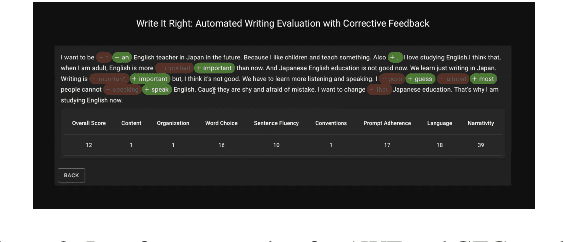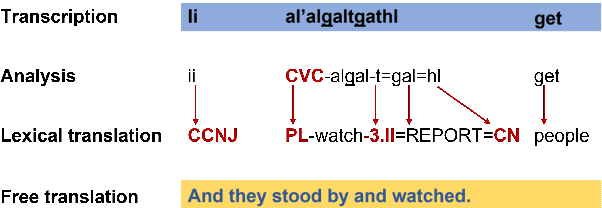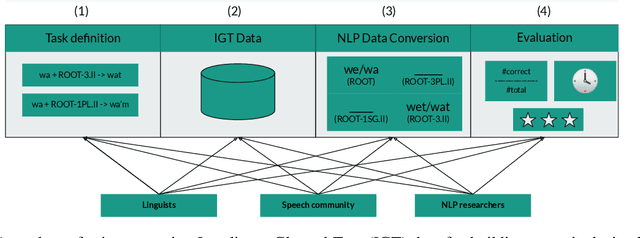Edith Coates
Neural Automated Writing Evaluation with Corrective Feedback
Feb 27, 2024



Abstract:The utilization of technology in second language learning and teaching has become ubiquitous. For the assessment of writing specifically, automated writing evaluation (AWE) and grammatical error correction (GEC) have become immensely popular and effective methods for enhancing writing proficiency and delivering instant and individualized feedback to learners. By leveraging the power of natural language processing (NLP) and machine learning algorithms, AWE and GEC systems have been developed separately to provide language learners with automated corrective feedback and more accurate and unbiased scoring that would otherwise be subject to examiners. In this paper, we propose an integrated system for automated writing evaluation with corrective feedback as a means of bridging the gap between AWE and GEC results for second language learners. This system enables language learners to simulate the essay writing tests: a student writes and submits an essay, and the system returns the assessment of the writing along with suggested grammatical error corrections. Given that automated scoring and grammatical correction are more efficient and cost-effective than human grading, this integrated system would also alleviate the burden of manually correcting innumerable essays.
Dim Wihl Gat Tun: The Case for Linguistic Expertise in NLP for Underdocumented Languages
Mar 17, 2022

Abstract:Recent progress in NLP is driven by pretrained models leveraging massive datasets and has predominantly benefited the world's political and economic superpowers. Technologically underserved languages are left behind because they lack such resources. Hundreds of underserved languages, nevertheless, have available data sources in the form of interlinear glossed text (IGT) from language documentation efforts. IGT remains underutilized in NLP work, perhaps because its annotations are only semi-structured and often language-specific. With this paper, we make the case that IGT data can be leveraged successfully provided that target language expertise is available. We specifically advocate for collaboration with documentary linguists. Our paper provides a roadmap for successful projects utilizing IGT data: (1) It is essential to define which NLP tasks can be accomplished with the given IGT data and how these will benefit the speech community. (2) Great care and target language expertise is required when converting the data into structured formats commonly employed in NLP. (3) Task-specific and user-specific evaluation can help to ascertain that the tools which are created benefit the target language speech community. We illustrate each step through a case study on developing a morphological reinflection system for the Tsimchianic language Gitksan.
 Add to Chrome
Add to Chrome Add to Firefox
Add to Firefox Add to Edge
Add to Edge